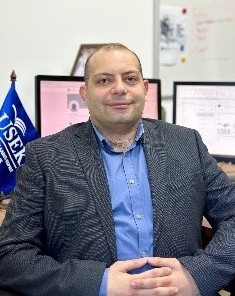Guest Editors
Prof. Rida Y. Nuwayhid
Email: rnuwayhid@aust.edu.lb
Affiliation: Mechatronics Engineering Department, American University of Science and Technology (AUST), Alfred Naccache, Beirut, 16-6452, Lebanon
Homepage:
Research Interests: energy conversion, thermoelectrics, photovoltaics

Assoc. Prof. Bechara F. Nehme
Email: becharanehme@usek.edu.lb
Affiliation: Electrical, Telecommunications and Computer Engineering Department, Holy Spirit University of Kaslik, Kaslik, Jounieh, P.O. Box 446 Jounieh, Mount Lebanon, Lebanon
Homepage:
Research Interests: photovoltaics, heat transfer in PV panels, degradations of PV panels

Summary
Photovoltaic solar energy conversion has become the method with the highest utility these days with large annual increments in the total installed capacity. However, save for some indirect cell-mounting schemes, there has not been much progress in generating more power from generic photovoltaic converters. Thermoelectrics, operating on longer wave thermal energy inputs may be a complementary method specifically because a large part of the photovoltaic power deficit is due to non-converted thermal energy which raises the panel temperature and thus decreases its output. Thus, the thermoelectric converter can either generate further power from the photovoltaic residual heat or, operating in a reverse cooling mode, may actually cool the photovoltaic converter and therefore possibly increase its output. A third option could be the pre-converter splitting of the input solar signal and routing the short-wave part to the photovoltaic while the longer wave goes to the thermoelectric. Adding to all these, the effect of PV panel heating is now more and more explored for potential guidelines on installation or even advanced control algorithms to raise their efficiency or increase their lifespan.
The aim is to investigate possible paths to achieve optimum maximum power output from photovoltaic-thermoelectric combinations or hybrids. The scope includes energy studies, specifically thermodynamics, heat transfer, and electronics -both steady and transient, theoretical and experimental.
Studies include:
1. Energy effects in Photovoltaic (PV) cells electronic and thermal
2. Thermoelectric heat energy conversion using solar or other low quality energy sources
3. Combinations of PV, TEG and TEC's modelling and experimental
4. Combinations versus hybrids of PV, TEG, and TECs
5. Control and modeling of PV panels regarding heating effect
Keywords
photovoltaics; thermoelectrics; hybrid and combined systems